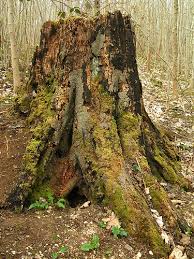So this week I finished reading a Winter's Tale. It was surprising at the end, but also very nice and happy. So, thinking of the end reminded me once more of the beginning and of how different it is from the ending. Trying to make a better comparison I re-read the first two acts and pulled out the imagery and symbols used in these acts. It was no wonder that I found several images of decay and rot, but something that was surprising was a couple of references to time and shepherds, which was foreshadowing some of the aspects of the second half of the play. Here is some of what I found:
"They were trained together in their childhoods; and there rooted betwixt them then such an affection which cannot choose but branch now."
"Yet, good deed, Leontes, I love thee not a jar o' the clock behind what lady-she her lord."
"We were as twinn'd lambs that did frisk i' the sun, and bleat the one at the other."
And then came Leontes' accusations:
"How accursed in being so blest! There may be in the cup a spider steep'd, and one may drink, depart, and yet take no venom, for his knowledge is not infected: but if one present the abhorr'd ingredient to his eye, make known how he hath drunk, he cracks his gorge, his sides, with violent hefts. I have drunk, and seen the spider."
"There is a sicknesss which puts some of us in distemper, but I cannot name the disease; and it is caught of you that yet are well."
 "How! caught of me! Make me not sighted like the basilisk: I have look'd on thousands, who have sped the better by my regard, but kill'd none so."
"How! caught of me! Make me not sighted like the basilisk: I have look'd on thousands, who have sped the better by my regard, but kill'd none so."
"For as the case now stands, it is a curse he cannot be compell'd to't - once remove the root of his opinion, which is rotten as ever oak or stone was sound."

"If it be so, we need no grave to bury honesty: There's not a grain of it the face to sweeten of the whole dungy earth."
I found that the imagery really changes the mood of the play. The audience finds that the characters are suddenly disagreeing and they can tell not only through their darkened faces, but also through the distinct images that are being described to them. Interesting, huh?













I completely agree with this, and I think Shakespeare's use of imagery reveals his direct insights into human nature. How many of us have eaten something we would have said no to otherwise because we didn't know the hated ingredient was in the food? The imagery helps us relate to the characters and the way that they think.